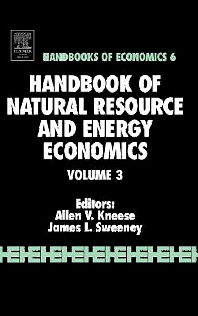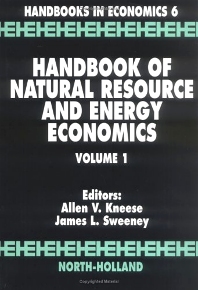Books in Agricultural and natural resource economics
Books in Agricultural and natural resource economics
- 1st Edition
- Volume 1AB
- December 6, 2001
- Bruce L. Gardner + 1 more
- English
- Hardback9 7 8 0 4 4 4 8 2 5 8 8 9

Handbook of Agricultural Economics
- 1st Edition
- July 31, 2001
- Tim Peck
- English
- Hardback9 7 8 1 8 5 5 7 3 1 9 0 5
- eBook9 7 8 1 8 5 5 7 3 8 8 3 6

The International Timber Trade
- 1st Edition
- July 31, 1995
- Julian Roche
- English
- eBook9 7 8 1 8 4 5 6 9 2 8 6 5

The International Wool Trade
- 2nd Edition
- May 31, 1995
- Michael Atkin
- English
- eBook9 7 8 1 8 4 5 6 9 2 8 2 7

The International Grain Trade
- 1st Edition
- January 1, 1995
- Marcelo Raffaelli
- English
- eBook9 7 8 1 8 4 5 6 9 9 1 3 0

Rise and Demise of Commodity Agreements
- 1st Edition
- Volume 10
- December 7, 1994
- F. Caillavet + 2 more
- English
- eBook9 7 8 0 4 4 4 5 9 9 5 4 4

Agricultural Household Modelling and Family Economics
- 1st Edition
- Volume 3
- April 8, 1993
- A.V. Kneese + 1 more
- English
- Hardback9 7 8 0 4 4 4 8 7 8 0 0 7
- eBook9 7 8 0 0 8 0 5 4 8 5 5 5

Handbook of Natural Resource and Energy
- 1st Edition
- February 28, 1993
- Julian Roche
- English
- eBook9 7 8 1 8 4 5 6 9 2 8 4 1

The International Rice Trade
- 1st Edition
- January 1, 1992
- Richard Duncan
- English
- eBook9 7 8 1 7 8 2 4 2 0 0 3 3

Agricultural Futures and Options
- 1st Edition
- Volume 1
- August 1, 1985
- A.V. Kneese + 1 more
- English
- Hardback9 7 8 0 4 4 4 8 7 6 4 4 7
